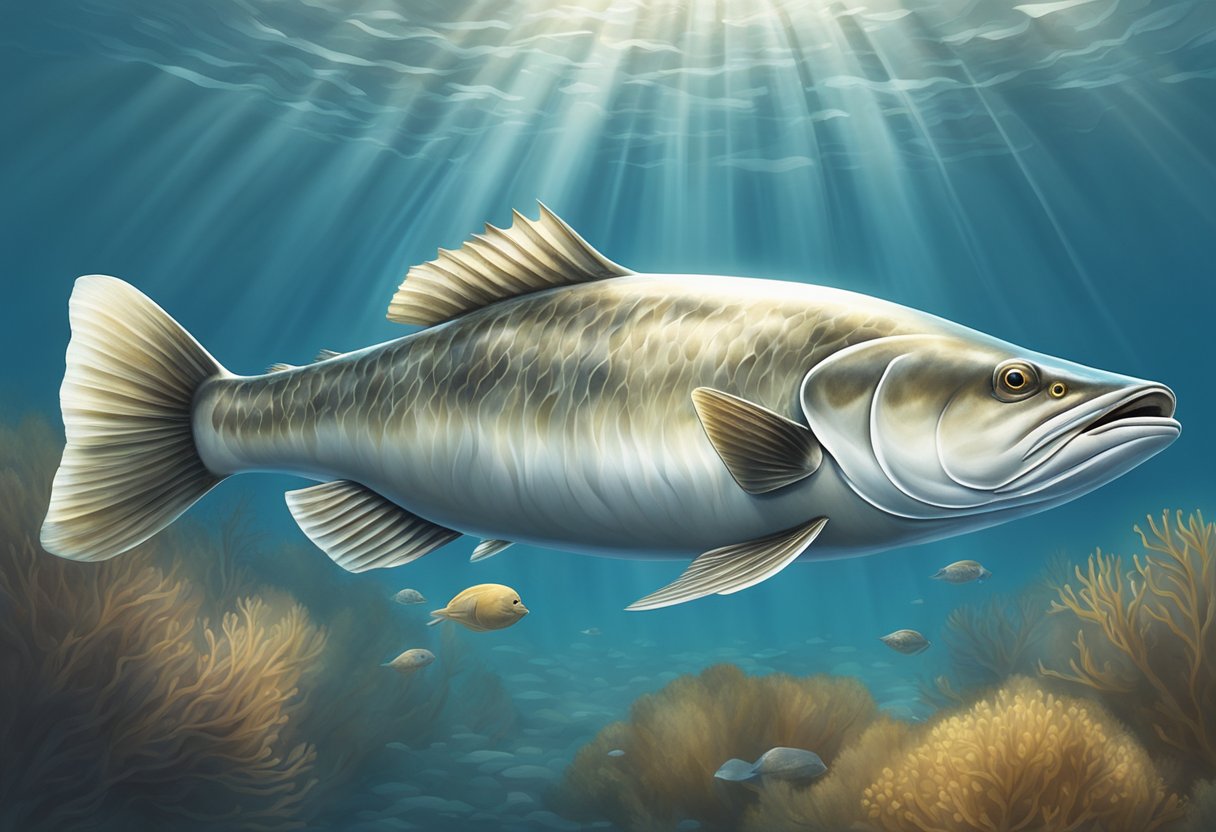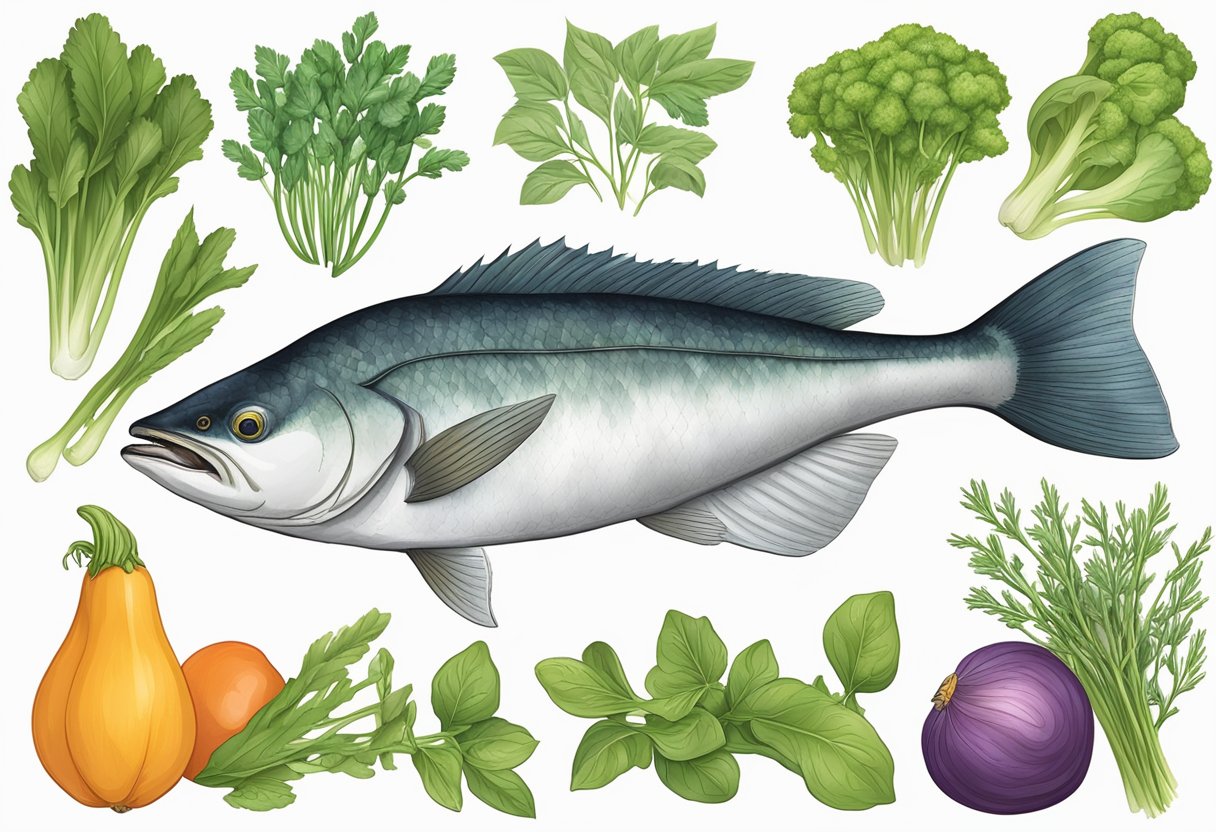Halibut fish is a popular and versatile seafood that is enjoyed by many people. It is a type of flatfish that is found in the North Atlantic and North Pacific oceans. Halibut is a large fish that can grow up to 8 feet in length and weigh over 500 pounds.

Halibut has a mild, sweet flavor and a firm, meaty texture that makes it a favourite among seafood lovers. It is also a good source of protein, omega-3 fatty acids, and other essential nutrients that are important for maintaining good health. Halibut is a versatile fish that can be prepared in a variety of ways, including grilling, baking, and frying.
Key Takeaways
- Halibut is a type of flatfish that is found in the North Atlantic and North Pacific oceans.
- It has a mild, sweet flavor and a firm, meaty texture that makes it a favourite among seafood lovers.
- Halibut is a good source of protein, omega-3 fatty acids, and other essential nutrients that are important for maintaining good health.
Biology and Species

Halibut is a type of flatfish that is found in the North Atlantic and North Pacific Oceans. There are two main species of halibut: the Atlantic halibut (Hippoglossus hippoglossus) and the Pacific halibut (Hippoglossus stenolepis). The Pacific halibut is the largest flatfish and can grow up to 8 feet in length and weigh over 500 pounds.
Physical Characteristics
Halibut have a distinct flat shape with both eyes on one side of the body, and they are usually brown or olive green in colour. Their skin is covered in small scales, and they have a diamond-shaped tail. Halibut have a white underbelly and a dark top side that helps them blend in with their surroundings.
Habitat and Distribution
Halibut are found in cold waters throughout the North Atlantic and North Pacific Oceans, from the Arctic to Greenland and down to California. They prefer to live on sandy or gravelly ocean floors in depths ranging from 100 to 1,000 feet.
Diet and Predators
Halibut are carnivorous and feed on a variety of prey, including herring, cod, and crustaceans. They are also preyed upon by killer whales and other large marine mammals.
Reproduction and Lifespan
Halibut reach sexual maturity at around 8 to 12 years old, and they spawn in shallow sand and gravel beds during the winter months. Female halibut can produce up to 4 million eggs per year. Halibut can live up to 55 years old.
Conservation Status
Halibut populations have been impacted by overfishing in the past, leading to declines in their numbers. However, sustainable fishing practices and regulations have been put in place to help protect halibut populations. The International Pacific Halibut Commission is responsible for managing the Pacific halibut fishery.
Related Species
Halibut are part of the family Pleuronectidae, which includes other flatfish such as turbot and flounder. The Greenland halibut (Reinhardtius hippoglossoides) is another closely related species that is found in the Arctic and North Atlantic Oceans.
Scientific Classification
- Kingdom: Animalia
- Phylum: Chordata
- Class: Actinopterygii
- Order: Pleuronectiformes
- Family: Pleuronectidae
- Genus: Hippoglossus
- Species: Hippoglossus hippoglossus (Atlantic halibut), Hippoglossus stenolepis (Pacific halibut)
Culinary Profile and Health Benefits

Halibut is a versatile fish that can be cooked in various ways, making it a favourite among chefs and home cooks alike. It has a mild, sweet taste and a firm yet tender texture, making it perfect for grilling, baking, or pan-frying. Here are some things you need to know about halibut's nutritional value, cooking methods, health considerations, availability, and selection.
Nutritional Value
Halibut is a great source of high-quality protein, omega-3 fatty acids, selenium, niacin, vitamin B6, vitamin B12, phosphorus, and vitamin D. It is also low in fat and calories, making it a healthy option for those who are watching their weight. A 3-ounce serving of halibut contains about 20 grams of protein and only 2 grams of fat.
Cooking Methods
Halibut can be cooked in a variety of ways, depending on your preference. It can be baked, grilled, or pan-fried. When cooking halibut, it is important to avoid overcooking it, as it can become dry and lose its flavour. The internal temperature of the fish should reach 145°F (63°C) for it to be safe to eat.
Health Considerations
Halibut is a healthy option for those who want to maintain a balanced diet. It is low in saturated fat and high in omega-3 fatty acids, which can help reduce inflammation, lower triglycerides, and improve blood pressure. However, it is important to note that halibut is higher in mercury than other fish, so it should be consumed in moderation, especially by pregnant women and young children.
Availability and Selection
Halibut is available year-round, but the best time to buy it is during its peak season, which is from March to September. When buying halibut, look for fillets that are firm, moist, and free of any discolouration or odour. Halibut is often sold in supermarkets and can also be found in specialty fish markets. It is important to choose a reputable source to ensure that the fish is sustainably caught and free from contaminants and parasites.
Overall, halibut is a delicious and nutritious fish that can be enjoyed in a variety of ways. Its nutritional value, low-fat content, and versatility make it a great addition to any diet. However, it is important to be aware of its mercury levels and to consume it in moderation.
Frequently Asked Questions

How much does halibut typically cost?
Halibut is considered a premium fish, and as such, it can be quite expensive. The price of halibut can vary depending on the season, location, and quality. On average, you can expect to pay around £20-£30 per pound for fresh halibut. Frozen halibut tends to be slightly cheaper, at around £15-£20 per pound.
Can you suggest some halibut recipes?
Halibut is a versatile fish that can be cooked in many different ways. Some popular recipes include grilled halibut with lemon and herbs, baked halibut with a breadcrumb crust, and pan-seared halibut with a creamy sauce. You can also use halibut in soups, stews, and curries. When cooking halibut, it's important to avoid overcooking it, as this can make the fish tough and dry.
What are the health benefits of eating halibut?
Halibut is a nutritious fish that is rich in protein, omega-3 fatty acids, and vitamins and minerals. Omega-3 fatty acids are important for heart health, and can help to reduce inflammation in the body. Halibut is also a good source of vitamin D, which is important for bone health and immune function.
What's the average size of a halibut?
Halibut can grow to be very large, with some specimens weighing over 500 pounds. However, the average size of a halibut that is caught and sold commercially is around 20-30 pounds. Halibut that are caught by recreational fishermen tend to be smaller, with an average weight of around 10-20 pounds.
What does halibut taste like?
Halibut has a mild, sweet flavour that is often compared to that of cod or haddock. The texture of halibut is firm and meaty, with large flakes that are easy to separate. Halibut is a versatile fish that can be paired with a wide range of flavours and seasonings.
Why is halibut considered a special fish?
Halibut is considered a special fish because of its large size, firm texture, and delicate flavour. It is also a popular fish for sport fishing, as it can be challenging to catch due to its size and strength. Halibut is a prized catch among fishermen and is often served in high-end restaurants and at special events.

